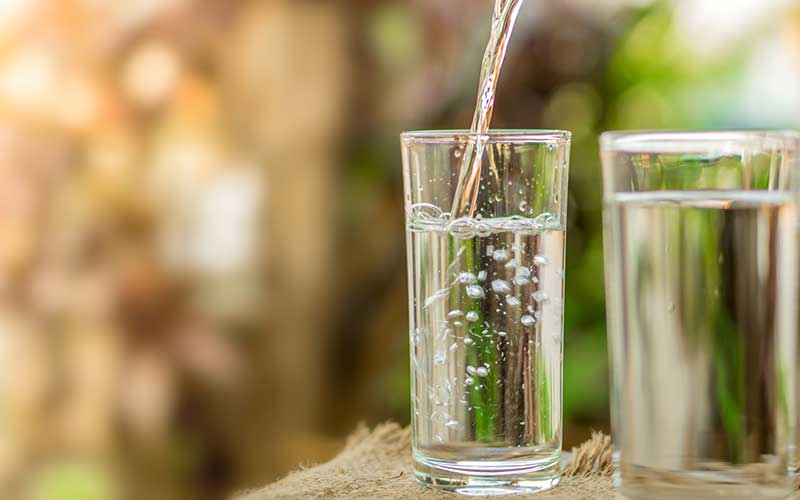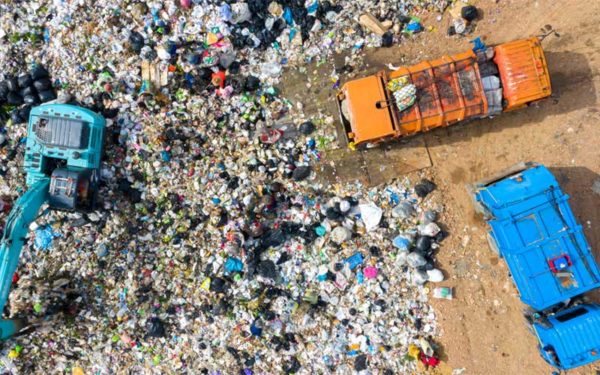
Toxic chemicals are putting Rhode Island's drinking water – and health – at risk. Photo: Doucefleur via IStock
As we have written previously, New Englanders can no longer take for granted the safety of our drinking water. The problem of “PFAS” pollution threatens drinking water in many communities throughout the region. Unfortunately, Rhode Island is no exception. PFAS – per- and polyfluorinated alkyl substances – are toxic chemicals that have been found in public water supplies, private wells, and groundwater in a number of cities and towns here in the Ocean State, warranting serious action by regulators to protect the public’s health.
The severe risks caused by these chemicals are well known, but federal regulators have failed to take meaningful action to protect the public from them. For that reason, CLF and our partners are calling on state leaders across New England to step in to protect our waters – and our health – from these dangerous poisons.
Your help will be critical in holding state leaders to account on this issue. Be sure you’re signed up for our email alerts so you’ll know the best time to make your voice heard.
Toxic Chemicals Pose a Growing Problem
PFAS are a public health “perfect storm.” They are extremely persistent in the environment and our bloodstreams, highly mobile in water, and toxic in tiny amounts.
They are also pervasive. First developed in the 1950s, today PFAS can be found in everyday products ranging from nonstick cookware to water-repellent clothing to stain-resistant fabrics and carpets. They have been used in some firefighting foams, resulting in contamination of sites such as Naval Station Newport. Manufacturing processes can even cause PFAS to be emitted into the air.
PFAS are toxic to humans in very small concentrations and pose a wide range of health threats. They are suspected to cause cancer and have been linked to growth, learning, and behavioral problems in infants and children. They also can cause problems with fertility and pregnancy; compromise immune systems; and interfere with natural hormones and with liver, thyroid, and pancreatic function. Developing fetuses and newborn babies are particularly sensitive to some PFAS.
Two types of these toxic chemicals – perfluorooctanoic acid, or PFOA, and perfluorooctanesulfonic acid, or PFOS – have been phased out as a result of the dangers they pose to human health and the environment. Because of their persistent properties, however, they will remain a threat for decades to come.
Moreover, and particularly troubling, manufacturers have replaced the phased-out chemicals with new ones, many of which haven’t been tested adequately for their impacts on humans. Today, approximately 3,000 or more different types of PFAS are in use – threatening the health and safety of our water and the people who drink it.
PFAS Threaten Rhode Island Waters
PFAS are in waters throughout New England. In Rhode Island, tests have detected these dangerous chemicals in drinking water, groundwater, and surface waters throughout the State, primarily at and around former military bases and other sites that used firefighting foams. For example, testing in Burrillville found water that was unsafe to drink, with PFAS levels that exceeded Health Advisory Limits set by the Environmental Protection Agency (EPA) – which are not stringent enough to meaningfully protect public health.
Similar contamination has been found in other New England states, including Vermont, New Hampshire, and Massachusetts.
Setting Drinking Water Standards – You Can Help!
Despite the significant health risks associated with PFAS, EPA has failed to show the necessary leadership to protect the health of our drinking water. While having developed a health guidance standard for two PFAS (PFOA and PFOS), it has not yet established standards under the Safe Drinking Water Act – standards that would ensure the safety of public water supplies.
In the absence of federal action, Rhode Island has begun to take some steps to protect residents on its own. As mentioned above, the State has already started testing its drinking water supply for PFAS contamination. Also, the Rhode Island Department of Environmental Management has implemented a rule to establish EPA’s Health Advisory Limit for PFOA and PFOS as an enforcement standard for groundwater contamination.
Unfortunately, this standard is too weak to protect public health meaningfully, and it fails to protect our drinking water systems. Because the Rhode Island Department of Health has yet to establish a drinking water standard for PFAS, public water systems in the state are not required to monitor for or treat unsafe concentrations of these toxic substances.
It’s critical that we build on these initial steps and establish rules to protect our drinking water from PFAS contamination. This process should include opportunities for public input, as well as the Department of Health’s further consideration of the science surrounding these chemicals. We’ll be part of that process – pushing for the adoption of truly protective standards – and we urge you to do the same.
If you’d like to be alerted when you can make your voice heard by attending a hearing or sending in a public comment, be sure that you’re signed up for our email list. Your voice will be critical in ensuring the final standards are strong and protective.
We’re Also Pushing for a New Approach: Regulating the Entire PFAS Class of Chemicals
In February, CLF and Toxics Action Center petitioned the Rhode Island Department of Health to immediately implement a drinking water standard for a group of five common PFAS as well as to develop an approach for safeguarding our water from the entire PFAS class. With more than 3,000 PFAS chemicals in use today – and more being created – we cannot continue to regulate these chemicals on a chemical-by-chemical basis.
CLF is urging this same approach in every New England state because we can’t wait any longer to protect our communities and our health.




